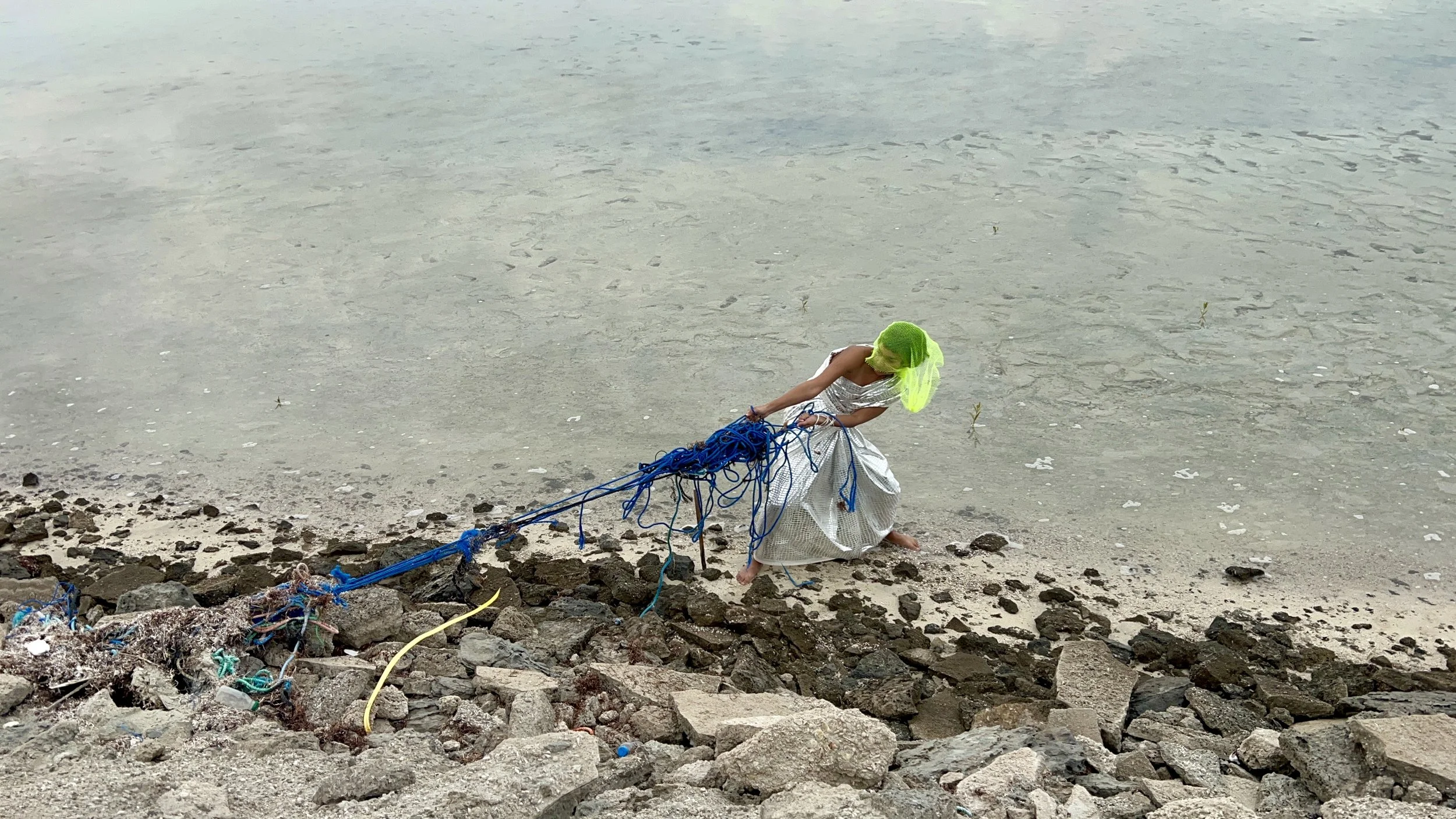In The Hedge of Halomancy, artist duo Hylozoic/Desires excavate the lost archive of the Inland Customs Line. This 4,000km long line–2,500 of which constituted a planted barrier, also known as ‘The Great Hedge of India’–was imposed by British colonial powers in the nineteenth century to enforce the Empire’s deadly monopoly on salt. Traversing the Indian subcontinent, it separated the British-occupied Bengal Presidency from independent states, to prevent smugglers carrying across this invaluable commodity. Hylozoic/Desires work at the threshold of historical records and speculative imaginings to penetrate this porous border.
The piece considers this ‘hedge’ as a poetic and political space, a partition that begets a series of divisions and perforations that continue to fray, tear and rip into our present. The hedge becomes both a border infrastructure of slow violence and a garden of resistance. In these vegetal worlds that grow, ripen and rot, smuggling becomes an informal network of exchange and rebellion. Indigenous knowledge is a decolonial epistemology. The material and the spiritual are permeable.
The protagonist, Mayalee, is inspired by a courtesan who defies the Empire’s attempts to cut off her stipends, which were made in mounds of salt. Instead, she issues the salt to conduct rituals of halomancy (salt divinations). One of her prophecies reaches Allan Octavian Hume, the hedge’s British commissioner, and changes the course of history. Ornithologist, botanist and staunch colonialist, Hume finds his belief in the Empire slowly eroding.
Burnt down in the 1857 uprising, eaten by termites and infested by field rats, the hedge resists subjugation. Watching his hubristic endeavour crumble, Hume joins the occult, theosophical society and begins to practise transcendental communication. He becomes an important ally of the Indian liberation movement, eventually co-founding the Indian National Congress – the same party in whose name Gandhi stages a Salt Satyagraha half a century later.
By 1947, India is free from British rule, but independence comes at a price: the land must be partitioned.
We are salt eaters, Mayalee insists. Messages infiltrate space and time. We divine futures of freedom.





